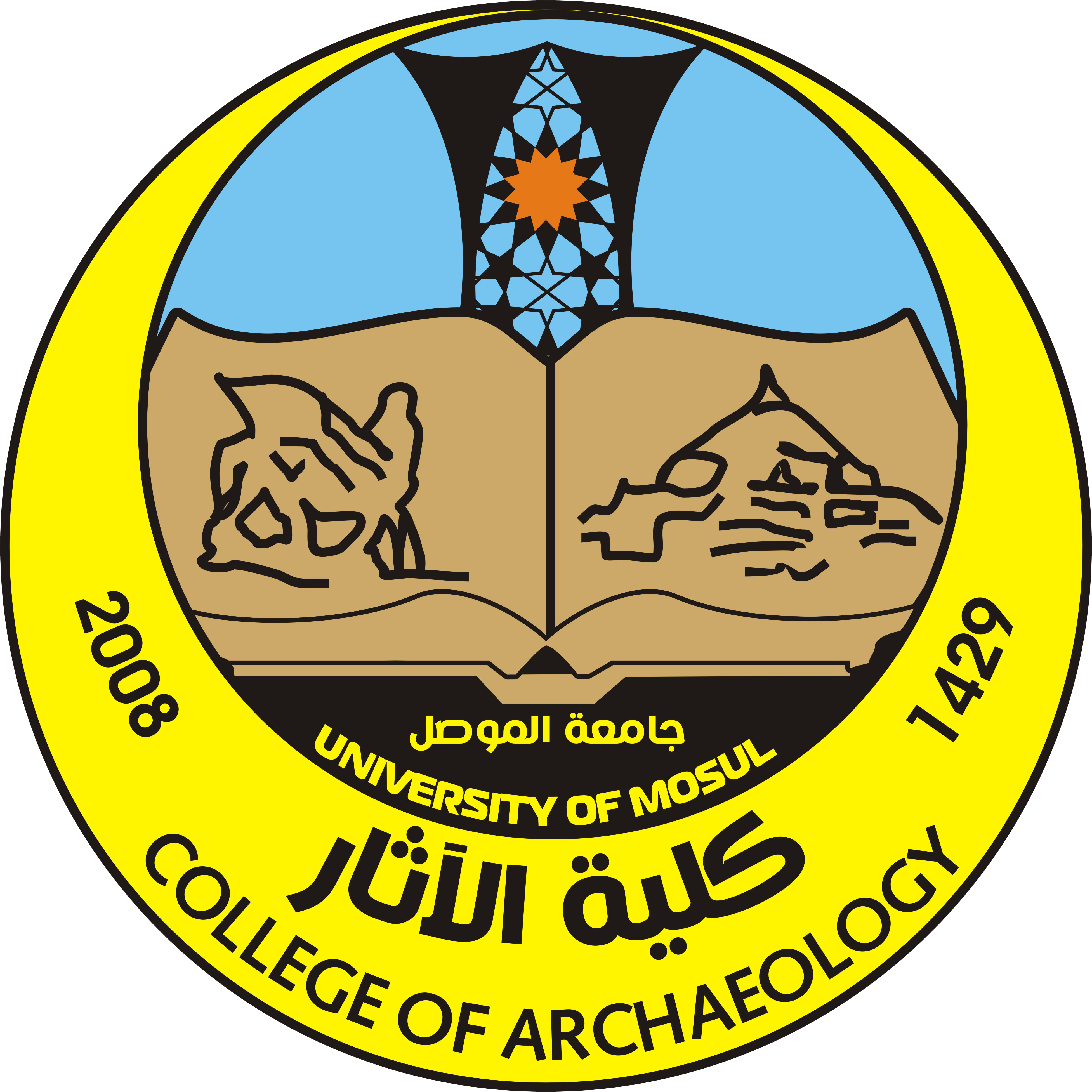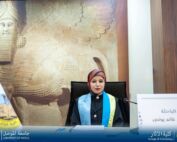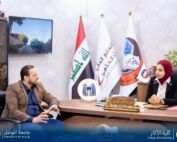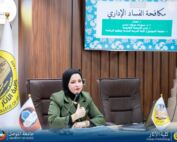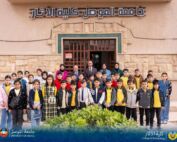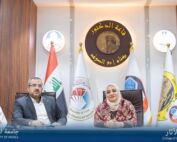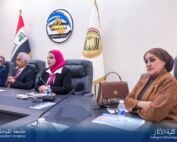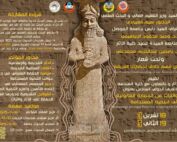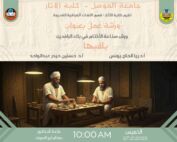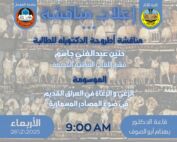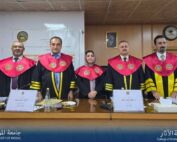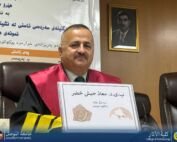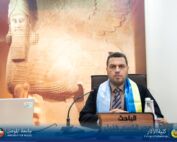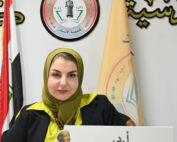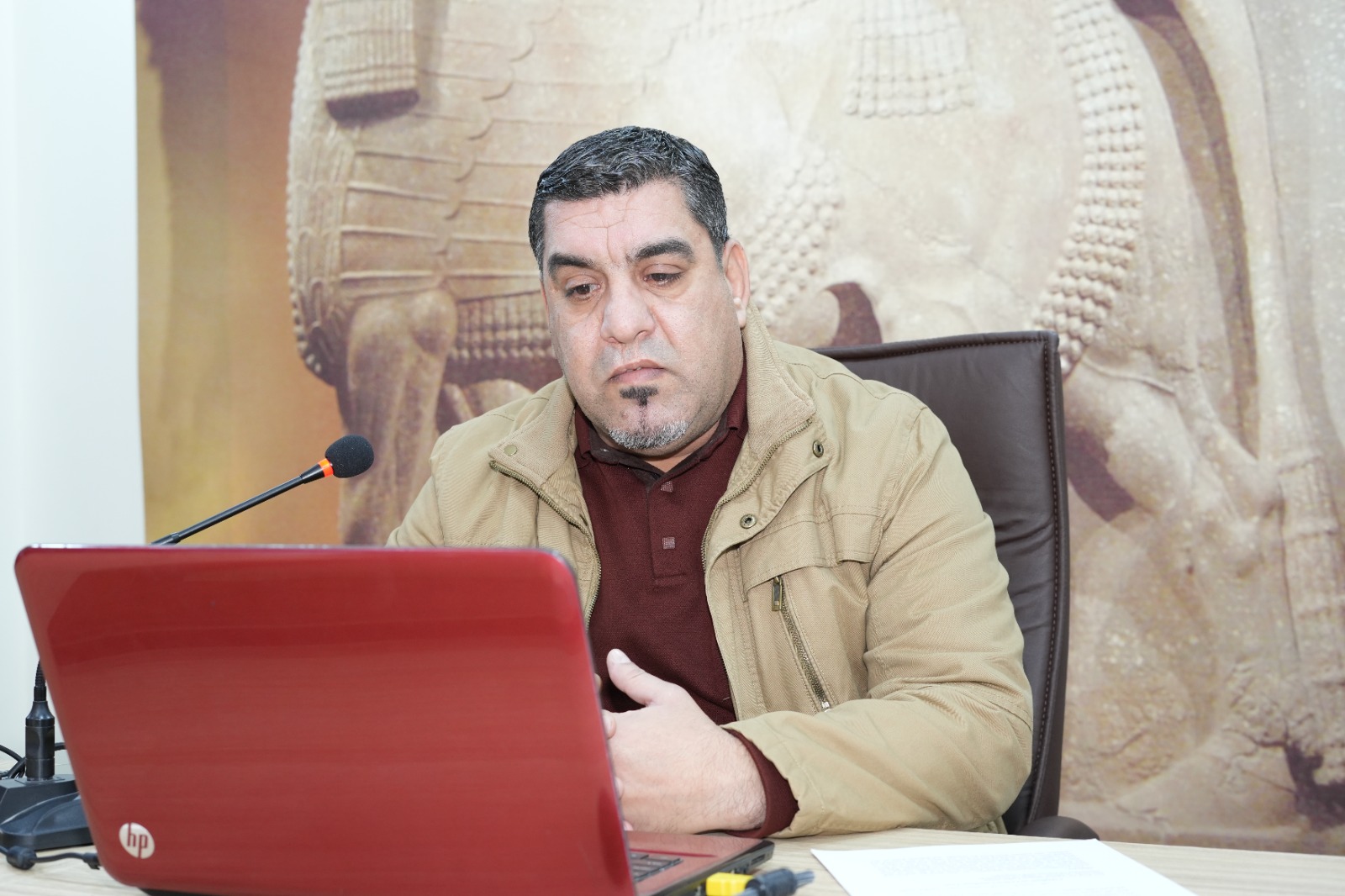24 May، 2023
A master’s thesis in the College of Archeology discussing (the writings in the traditional houses of Mosul)

On Wednesday, May 24 2023, in the hall of Dr. Behnam Abu Al-Souf in the college, the Department of Archeology at the College of Archeology/ University of Mosul discussed the master’s thesis (Writings in Mosul’s Heritage Houses). Part of it which was attended by Assistant Lecturer Khalis Abdul Karim Farman/ Assistant Dean for Administrative Affairs, and a number of college staff, employees, and students.
The thesis submitted by the student (Shahla Salah Jarallah) dealt with the study of writings in the heritage houses of Mosul, the heritage houses of Mosul that were decorated with Arabic, Hebrew and Syriac writings in various places in the old city of Mosul. (23) houses were subjected to the study that contained Arabic writings, and five houses were subjected to the study. It includes Hebrew writings, and four floors that include Syriac writings.
The study showed that there is a kind of similarity and difference in the biblical contents, so the religious writings from the Holy Qur’an resembled religious writings from the books of the Old Testament. They differed in the poetic writings that decorated the walls of the halls and rooms in the homes of Arab Muslims. Liberation and the recent events that tried to obliterate the cultural and civilized features of Mosul, some of which are outdated and affected by environmental and weather factors, and some of them were maintained in wrong ways without the knowledge of the authorities concerned with maintenance and antiquities.
The study focused on reading and analyzing these writings scientifically and artistically, and analyzing the shapes and forms of letters. In addition, the study was supported by photographs and analytical drawings of the writings, and the analysis of letters and their shapes.
The study found that most of the Arabic writings in the Mosul homes are written in the Thuluth script, because it is the most Arabic script capable of decoration, and there are writings in the Jali script and the simple Kufic script. In the Astrangeli script known for its acceptance of decoration.
The study also documented these writings and showed their importance, due to the historical and artistic significance of these religious writings, and the statement of the creativity of the Mosuli artist, his mastery of execution methods, and highlighting the features of the calligraphy painting, such as calligraphy and calligraphic decoration.
The discussion committee was chaired by the Emeritus professor Dr. Ahmed Qassem Al-Jumaa, and the membership of each of: Prof. Dr. Adnan Shabib Jassim / University of Baghdad / College of Languages / Department of Hebrew Language and Assistant Professor Dr. Farhan Mahmoud Elias, with the supervision and membership of each of: – Assistant Professor Dr. Muhammad Khader Mahmoud and Professor Dr. Sattar Abdul Hassan Jabbar / Al-Qadisiyah University / College of Archeology / Department of Archeology.



